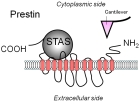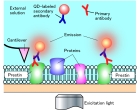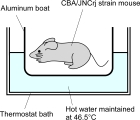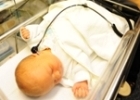Cell and Gene
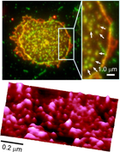
|
Our exquisite hearing system is realized by the motility of the outer hair cells (OHCs) in the cochlea, which amplifies the sound entering the ear. The origin of this OHC motility is believed to be a motor protein expressed in the plasma membrane of the OHCs. This motor protein has a diameter of one-thousandth of a hair width and is thought to transform its own size. In the laboratory, we are attempting to elucidate its transformation mechanism and to develop a new technology for manipulating this motor protein.
|
|---|
Diagnostic Apparatus
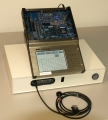
|
In our laboratory, based on knowledge of mechanical engineering and auditory mechanics, we would like to contribute to the area of human health by developing unique and effective diagnostic systems. The middle ear, which transmits the sound entering the external ear to the inner ear, is difficult to directly observe and thus the diagnosis of middle ear diseases is difficult. Therefore, we are attempting to develop a non-invasive diagnostic system for such diseases. Furthermore, we are focused on applying this system to neonates for early detection of hearing dysfunction.
|
|---|
Simulation
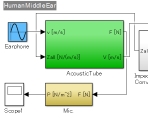
|
Computer simulation is a useful method to analyze a phenomenon which is difficult to experimentally measure and to predict an unknown phenomenon from a known one. Our hearing system is extremely mechanical and shows tiny vibrating behavior of the nanometer level. We are developing finite element models of the mammalian hearing system and attempting to clarify the mechanism of sound perception. Furthermore, we are aiming to elucidate clinical issues such as hearing loss caused by traumatic noise exposure, ototoxic acid, diseases and so on.
|
|---|

